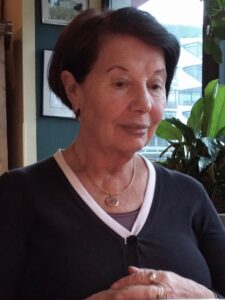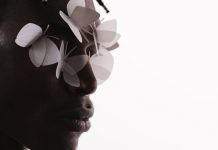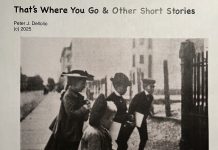By Asya Pekurovskaya
*
Quest for Glory and Quest for Word: Case of Bro and Case of Bo is a 156,000-word mixed genre manuscript that weaves together autobiography, essay, and literary criticism to explore the lives and legacies of two Russian poets, Joseph Brodsky and Dmitry Bobyshev, who were part of Anna Akhmatova’s inner circle during her final years (1889–1966).
Quest for Glory and Quest for Word delves into the intricate dynamics between Joseph Brodsky and Dmitry Bobyshev, irreconcilable rivals following Akhmatova’s death. Brodsky’s meteoric rise to fame culminated in his emigration to America in 1972 and a Nobel Prize in 1987, though his journey was marred by personal and professional struggles. Conversely, Bobyshev remained in the shadows for much of his life, only to be later recognized for his enduring literary brilliance, praised by critics as “belonging to the masterpieces of world literature.”
Below is a chapter extract from the book.
*
Chapter 23. Reading Frost
In his lecture at the College Internacional de Philosophie (1990), Bro chose to analyze a poem by Frost. And when he presented Frost as a “menacing poet” to the audience familiar with Frost’s traditional reputation as a farmer and pastoral narrator of nature, they were intrigued. Could it have known that Frost (1874-1963) had already been called a “terrifying poet” by Lionel Trilling? But that was at a private banquet on the occasion of the poet’s 85th birthday (However, this episode later surfaced in an essay by Wystan Auden.254
The method of independent and line-by-line reading of a poetic text, chosen by Bro, is traditionally considered as the lack of a method, although this is exactly how William Empson, “a massive literary figure” of the twentieth century, read poetic texts.246 True, while practicing this method in the lecture hall, Bro most likely picked it up not from Empson, but from Auden.255
He selected the poem “Come in!” (1943) subsequently included in the the essay collection On Grief and Reason (1994). Here is Frost’s text:
As I came to the edge of the woods,
Thrush music—hark!
Now if it was dusk outside,
Inside it was dark.
Too dark in the woods for a bird
By sleight of wing
To better its perch for the night,
Though it still could sing.
The last of the light of the sun
That had died in the west
Still lived for one song more
In a thrush’s breast.
Far in the pillared dark
Thrush music went—
Almost like a call to come in
To the dark and lament.
But no, I was out for stars:
I would not come in.
I meant not even if asked,
And I hadn’t been. (On Grief and Reason, pp. 227–228).
“The bird, as you know, is most often the bard, since, in fact, both sing,” Bro began the “exposition” thereby indicating a double reading plan, allowing the emphasis to shift from the “I” of the poet to the “I” of the singing thrush and back. The presence of this double plan may have allowed him to interpret the line “thrush music – hark” as a duet performed by both a bird and a poet. However, such an interpretation is hampered by the element of surprise contained in the “hark!” The poet hears singing, which he had not suspected before, which excludes his self–identification with the thrush.
Then why would Bro need this analogy? In anticipation of returning to this issue, I note that in the exhibition the analogy is only declared without justification. Bro remembers it, as will be shown, only in the commentary to the third stanza in order to abandon it in the fourth. Liberty, as a sign of style, is already stated in the exhibition:
“The dark forest is selva oscura, with which Dante began his journey through the ‘Inferno,’” Bro observes, adding the following clarification:
“Starting from the 14th century, a strong scent emanated from the forest, and where this scent led the author of the Divine Comedy, you probably know. In any case, when a 20th-century poet begins a poem by finding himself at the edge of the forest, there is reason to assume that an element of danger is present there.” (Ibid).
But Dante was not the first poet to propose the association of selva oscura (dark forest) with Hell.248 I am making this observation in case the reader succumbs to the popular opinion that Bro’s poems are difficult to understand due to his wide intellectual baggage, which is seemingly beyond the reach of the average reader. Keeping this popular opinion in view, I propose to outline the path that Bro neglected to take, but without which an understanding of Frost’s poem is hardly possible. This path should begin with “Ode to a Lark” by Percy Shelley (1753-1844), perhaps inspired by “Ode to a Nightingale” by John Keats (1795-1821).256
For identification purposes, I present two quatrains by Shelly:
“The pale purple even
Melts around thy flight;
Like a star of Heaven
In the broad daylight.
Thou art unseen, but yet I hear thy shrill delight.
Keen as are the arrows
Of that silver sphere
Whose intense lamp narrows
In the white dawn clear,
Until we hardly see, we feel that it is there.”
Like Shelley, Frost composes the poem based on his own observations of the bird and its vocal register responding to the change in light associated with sunset and nightfall. Like Shelley, Frost symbolizes the bird with the figure of the poet (soaring upward, always alone, always sing–ing and always, when exhausted, falling down, hiding from useless eyes). Referring the reader to William Empson’s excellent analysis of “Ode to a Lark,” I cannot resist quoting his final words:
“But on to this view of the bird as a symbol of spiritual life, which thinks of it as struggling and dying , is grafted another view which think of it as outside of human limitations; as free from pain and the satiety that follows mortal ecstasy, and indeed, like the nightingale, as immortal. <…> Its song, therefore becomes something absolute, fundamental, outside time, and underlying all terrestrial harmony. <…>
Such beauty is never wholly known by human limitations, and as it grows more, it must grow less visible. The sphere narrowing in daylight, then, is like the narrowing of the poet’s iris of eyelids, in the ecstasy of Romantic appreciation, like that fainting of the temporal mind in the very act of recognition of the eternal and absolute beauty which Shelly elsewhere compared to the fading of a red–hot coal. <…> The lark is dawning into its day of joy just as the day of common earth is fading, and, to complete the reversal, the mind which has darkened, ‘forlorn’, from the vision of natural beauty, mat then dawn again into an intellectual appreciation of it.”257
As he continued to comment on Frost’s poem, Bro quotes the second stanza.
“Too dark in the woods for a bird
By sleight of wing
To better its perch for the night,
Though it still could sing.”
“What do you think is happening here?” he questions and instantly answers himself:
“A British or a Continental—or, for that matter, a properly American—innocent reader would still reply that it is about a bird singing in the evening, and that it is a nice tune. Interestingly, he would be right, and it is on this sort of rightness that Frost’s reputation rests.251 In fact, though, this stanza is extremely dark. One could argue that the poem considers something rather unpleasant, quite possibly a suicide. Or, if not suicide—well, death. And, if not necessarily death, then—at least, in this stanza—the notion of the afterlife” (On Grief and Reason. p. 230).
I am unaware of how the lines about the selva oscura could be understood by “a Briton or a continental dweller,” but a “true American and innocent reader” (in this case, the psychologist and cognitive scientist Georg Lakoff) reads these excerpts (from Dante and Frost) in the context of conceptual metaphors such as “Life is a journey” and “Knowledge is vision:”
‘’Road of Life’ evokes the realm of life and the realm of travel, and hence the traditional metaphor “LIFE IS A JOURNEY” connects them. “I found myself in a gloomy forest” reminds us that a path is not visible in the dark. This brings to mind the field of vision and, accordingly, the traditional metaphor: KNOWLEDGE IS VISION, as follows from expressions like “I see what you are getting at,” “His statements are not clear,” “The passage is obscure,” etc. It follows from all this that the speaker does not know what life goals to pursue, that is, he has no direction in life. Nothing less than a system of conditional metaphor is used to express this <…>.
Another not less well-known case of using the traditional system of metaphors is the case of Robert Frost.”258
At this point, I allow myself to interrupt Lakoff’s musing in order to return to it in a context in which the “properly American innocent reader” brings a significant refinement to the understanding of Frost’s text. But why exactly does the above stanza lead Bro to a speculation about its morbid nature? I find it appropriate to remind you of Bro’s general belief that the reading of a poem should not go beyond what is said in the poem itself. This thought was clearly expressed in his essay about Hardy: “If the author’s life provides a key to his works, as the common wisdom claims, then, in the case of Hardi, the question arises: to which works? […] In short, a poet should be examined only through the prism of his verses—and nothing else (Bro, On Grief and Reason, p. 315).
But to what extent did Bro adhere to this rule himself? In what words of the second stanza could he perceive a particular gloominess, including thoughts of suicide, or if not suicide, then of death, and if not death, then of the afterlife? Could his sensitive ear penetrate the subtext that remained closed to any other reader? We would be compelled to accept such an explanation if we didn’t violate Bro’s own prohibition by turning to sources beyond the poetic text. One recurring element in Frost’s biography is the fact that from 1934 onward, the poet experienced one death after another. In 1934, his daughter Marjorie died from puerperal fever, in 1938 his beloved wife died of heart failure, and in 1940 his son Carol took his own life.
Similarly, Bro’s interpretation of the second stanza as a reflection on the afterlife may have been inspired by literary allusions that juxtapose Frost’s name with Dante’s. Bro only offers a speculation that takes us even further away from Frost’s text:
“To put it more plainly, the afterlife is gloomier for Frost than for Dante. One wonders why, and the answer is either because he doesn’t believe in all those stories or because he counts himself among the damned. He is not in a position to improve his final situation, and I dare say that ‘the wing-flap’ can be regarded as an allusion to ‘the fluttering of the wings'” (On Grief and Reason, p. 231)253 Bro writes, or rather fantasizes, clarifying his thought in his commentary on the fourth stanza.
But what could make him jump from the second stanza to the fourth? It would seem that in the third stanza one can find justification for the gloomy scenario that he presented in the commentary to the second stanza. Indeed, in the third quatrain we learn that the thrush’s song is his last one:
“The last of the light of the sun
That had died in the west
Still lived for one song more
In a thrush’s breast.”
How does Bro read these lines?
“In the third stanza, you hear the bard singing: you hear the song itself, the last song. It’s a tremendously expansive gesture. Look at how each word here awaits the next. ‘Light’ – caesura, ‘fading’ – caesura, ‘sun’ – end of the line, that is, a major caesura. ‘Melted’ – caesura, ‘in the west.’ Our bird/bard traces the last ray of light to its vanishing source. You can almost hear in this line the old, beloved melody of ‘Shenandoah,’ the song of the westward journey” (On Grief and Reason, p. 231).
Let us pay attention to this adverb “almost,” which defines the verb “to hear.” Bro assures the reader that he can “almost hear” the “Shenandoah” motif. This reference to “can almost hear” would have been acceptable if the text had been spoken or at least quoted, which Bro does not do. There is an additional point left unattended by Bro. The heliocentric cycle is attested in Frost not by a bard or a thrush, as Bro sees it, but by deus ex machina: having risen in the east, the solar globe disappears in the west. As for the “Shenandoah motif” (“the story of the march to the west”) goes, the very fact that the ballad could be known to Frost , there could be no place for it in this context: there is no talk of death in “Shenandoah.”
Bro’s assessment on the fourth stanza, according to which “the bird and the bard diverge on their paths,” is also not free from inaccuracies:
Far in the pillared dark
Thrush music went—
Almost like a call to come in
To the dark and lament.
“The key word here is ‘pillared,’ of course: it suggests a cathedral interior—a church, in any case. In other words, our thrush flies into the woods and you hear the music from within, ‘almost like a call to come in / To the dark and lament.’ If you want, you may replace ‘lament’ with ‘repent’: the effect will be practically the same.
What’s being described here is one of the choices which our old bard faces this evening: the choice he does not make. The thrush has chosen “sleight of wing” [namely, “soborovanie” (“unction”) in Russian and the “last rites” (viaticum) in English – AP]. He settles down for the night; he accepts his fate, for regret is acceptance. Here one could plunge into a labyrinth of theological subtleties – Frost was naturally a Protestant, etc. I would refrain from doing this, for the Stoic position is equally suitable for both believers and agnostics: when doing poetry, it is almost inevitable. In general, references (especially religious ones) should not be narrowed down to conclusions” (Ibid).
By constructing his interpretation of the thrush-bard song on religious symbolism (with reference to the sacrament of ‘soborovanie’ through ‘repentance,’ Bro abstains from delving “into the labyrinth of theological subtleties.” However, did he himself understand these subtleties? Judging by the translation of the word ‘soborovanie’ into English as ‘last rights’ (Viaticum), taken from the vocabulary of Catholic Christianity, he does not see the difference between these sacraments. Yet, in Orthodox Christianity, ‘soborovanie’ refers to a prayer for the forgiveness of sins (including forgotten sins) and for healing, while in Catholic Christianity, ‘last rights’ refers to the preparation for death, as the final journey through repentance.
And since ‘soborovanie,’ performed by several priests collectively, is not synonymous with repentance (repentance is a prayer for the forgiveness of so-called “mortal sins” – murder, abortion, adultery, etc.), this interpretation requires special commentary, which Bro fails to provide. But even if we set aside the question of the inaccuracy of the interpretation, ‘flutter of wings’ cannot be understood as ‘soborovanie,’ if only because the role of forgiving sins cannot be performed by the one who asks for forgiveness. Unless Bro himself took on that role.
Bro concludes the reading of the poem “Come in!” with the thought that it serves as a postscript to The Divine Comedy and should be understood as follows: “The twenty lines of the poem constitute, as it were, the title’s translation. And in this translation, I am afraid, the expression ‘come in’ means ‘to die’” (Ibid, p. 234)
But isn’t this conclusion too hasty?
Although Frost’s name has been quite firmly linked to Dante since the 1988 publication of the book titled Robert Frost and the New England Renaissance by George Monteiro, Frost himself, it seems, did not welcome interpretations of his works in an infernal Dantean key. Therefore, we should not disregard the fact that the title ‘Come in!’ means ‘a step across the threshold,’ ‘crossing the border,’ and the choice associated with it. The lyrical hero remains behind the threshold, as implied in the last stanza of the poem:
But no, I was out for stars:
I would not come in.
I meant not even if asked,
And I hadn’t been.
How does Bro suggest we understand these last lines? If he had taken into account that the bard (and here we are really talking about a bard) had not taken a step into the darkness, he could hardly have insisted that Frost accept Dante’s infernal decision. Bro offers a way out of this impasse by proposing to understand the bard’s refusal to enter not literally, but as a typical Frost hoax:: “There is too much jocular vehemence in these lines,” he wrote.
But here again Bro showed excessive haste.
In Chapter 5 titled “Roads and Paths,” George Monteiro provides a commentary on Frost’s poem “The Road Not Taken” (1916), in which he cites Dante’s “Inferno” in the translation by H.W. Longfellow (1867) as the poet’s source of inspiration. He also notes that the theme of the fork in the road was central to Frost’s poetry.
It would not be out of place to mention here that the text of“The Road Not Taken” was placed by sculptor George Lundeen on a stand, next to which he depicted Frost in full height (1996). Perhaps there is one significant event associated with this choice of text. In presenting Frost’s nomination for a professorship at Amherst College, its then-president, Aleksander Mejklejohn, launched Frost’s reputation as “the harbinger of the road not taken,” by reading this particular poem to his audience.
Its final stanza sounds as follows:
I shall be telling this with a sigh
Somewhere ages and ages hence:
Two roads diverged in a wood, and I—
I took the one less traveled by,
And that has made all the difference.259
And it is precisely the last lines that Lakoff quotes in his reflection I already interrupted, after which he continues:
“Because Frost’s language often does not signal that the poem should be taken metaphorically, incompetent English teachers sometimes interpret Frost as if he were a naturalist poet directly describing scenes of nature. <…> In their reading, this passage can be read not metaphorically as a story about a journey in which a person meets a crossroads. There is nothing in the text itself that could force a metaphorical interpretation. But since we are talking about the paths and crossroads, the context speaks of the journey. This activates the system of conditional metaphors, <…> in which long-term purposeful actions are understood as travels, and further, in comparison with life and career, they can also be understood as a journey of one person <.>. The poem is usually taken as a story about life and the choice of life goals, although it can also be interpreted as a story about a career and its path, or about some long-term purposeful activity” (Lakoff, CTM, pp. 284–285).
And Dante’s role in Frost’s poetry requires a separate discussion in the context of bird metaphors, which Osip Mandelstam insightfully wrote about.
Footnotes:
- Whystan Auden. Reading. Writing. Essays on Literature. Translation by A. Kurt, N. Usova, and B. Dubin. (Moscow: Olga Morozova Publishing House, 2016).
- “He was known for his ‘close reading, of course, an agile and intense, inspired and sometimes perverse attention to particular passages from poems and plays, and I can’t do anything with that except salute it with enormous gratitude, and return to the book again and again, and invite you to do the same” (Michael Wood. Literature and Taste of Knowledge (Cambridge: Cambridge University Press, 2005), pp. 95–96).
- According to Alan Ansen, Auden structured his lecture on The Gossips of Windsor as follows: he played nine records of Verdi’s Falstaff, accompanying the performance with a brief summary of the plot. Alan Ansen. The Table Talk. (Princeton, N.J.: Ontario Review, 1990).
- This image is found already in the sixth song of Virgil’s Aeneid.
- “Keats’s Ode to a Nightingale and Shelley’s Ode to a Skylark are two of the glories of English literature.” Mackie, Alexander (1906), Nature Knowledge in Modern Poetry. (New York: Longmans-Green & Company, OCLC). p. 29.
- 259. William Empson. Seven Types of Ambiguity (London: Penguin Books in Association with Chatto & Windus, 1930), p. 188.
- Brodsky argues that a European man loves nature differently than an American one. He looks at a tree in the context of cultural associations, while an American meets a tree as an equal with an equal, Auden writes about Frost as follows: “Nature is not a friend or foe for this poet, not a theatrical setting for a human drama: Nature is the poet’s terrifying self-portrait.” Brodsky. On Grief and Reason, p. 226.
- George Lakoff. The Contemporary Theory of Metaphor. in Metaphor and Thought (2nd. edition), Andrew Ortony ed. Cambridge: Cambridge University Press, pp. 284–285. Subsequent references to this volume will be given in parentheses, indicating the name (Lakoff), the initial letters of the title (STMiMT) and the page number.
- I should note the terminological inconsistency between soborovanije (or “unction” as translated from Russian) and “last rites” (viaticum) in English. The consequences of the discrepancy will be discussed below.
- 263. G. Monteiro, Robert Frost and the New England Renaissance (Lexington: University Press of Kentucky, 1988), p. 44.
(Note: All poetry translations in the above article are by the author (Asya Pekurovskaya) unless indicated otherwise.)
To read Part-1 (Chapter-6 of the subject book), click here
About the Author

Asya Pekurovskaya was born in Leningrad, Russia, and after marrying a storyteller and earning a Master’s degree in literature from Leningrad University, she emigrated to America. She completed a doctoral program in literature at Stanford University and has also participated in a post-doctoral seminar in philosophy at the University of Virginia at Charlottesville.












